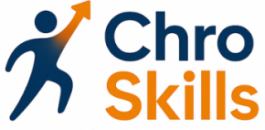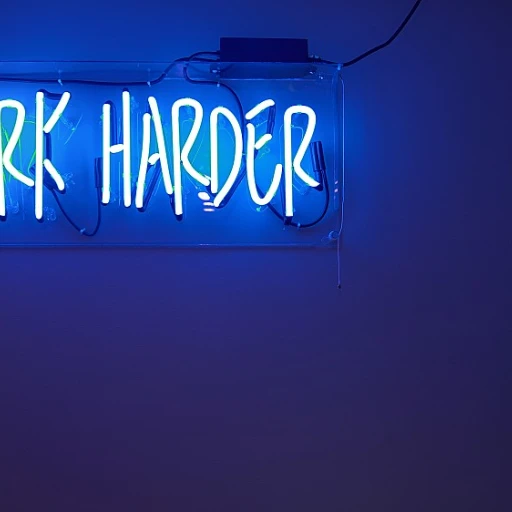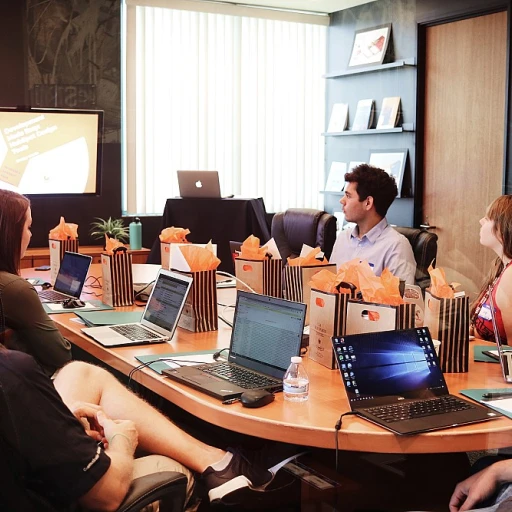
The Role of a Chief Human Resources Officer
The Strategic Significance of the CHRO
The Chief Human Resources Officer (CHRO) plays a crucial role in steering an organization towards achieving its goals through effective human resource management. At the helm of the HR department, the CHRO is not just an administrative role but a strategic partner responsible for ensuring that the policies and practices align with the organizational objectives. As businesses evolve, so does the role of the CHRO, who must stay adept at fostering a dynamic workforce, managing employee performance, and bridging skill gaps through robust training programs.
Understanding the specific skills and abilities essential for a CHRO can help in orchestrating programs that meet both current and future needs. These capabilities include leading the training needs assessment process, identifying the gaps between current workforce competences and organizational goals, and implementing strategies to enhance employee learning and job performance. By conducting effective needs analysis and assessments, the CHRO ensures the development of targeted training programs that strengthen both knowledge and skills, thereby supporting the organization's overall vision.
Incorporating needs analysis into the organizational process is a vital step where the CHRO helps tailor training programs that align with business objectives. This foresight not only improves job behaviors and employee engagement but also prepares the organization for future challenges. Identifying skill gaps through thorough assessments will help in crafting an agenda that supports the continuous improvement of both individual job performance and overall company success.
Key Skills for Effective HR Leadership
Essential Skills for HR Leadership
In the dynamic world of human resources, the role of a Chief Human Resources Officer (CHRO) is pivotal in steering the organization towards achieving its goals. To excel in this position, a CHRO must possess a diverse set of skills that not only enhance their own performance but also elevate the entire HR department. Here are some key skills that are crucial for effective HR leadership:
- Strategic Thinking: A CHRO must have the ability to align HR strategies with organizational goals. This involves conducting a thorough needs analysis to identify skill gaps and implementing training programs that address these gaps.
- Communication Skills: Effective communication is vital for a CHRO to convey the importance of training needs assessment and to ensure that employees understand the objectives of any training program.
- Analytical Abilities: The ability to analyze data and assess the effectiveness of training programs is essential. This involves understanding the assessment process and using it to improve job performance and organizational outcomes.
- Leadership and Influence: A successful CHRO must inspire and motivate employees, fostering a culture of continuous learning and development within the organization.
- Problem-Solving Skills: Identifying and addressing skill gaps requires a proactive approach to problem-solving, ensuring that training needs assessments are conducted effectively.
- Adaptability: The HR landscape is constantly evolving, and a CHRO must be adaptable to new trends and technologies that can enhance the training process.
By mastering these skills, a CHRO can effectively lead their team in conducting training needs assessments, which will help in identifying the specific needs of employees and designing programs that enhance their skills and knowledge. For more insights on staff development, explore key topics in staff development for HR leaders.
Training Needs Assessment: A Strategic Tool
Utilizing Needs Assessment as a Strategic Tool
A Training Needs Assessment (TNA) is an invaluable process for enhancing organizational performance and effectiveness. By identifying and understanding the current skill gaps within a company, HR leaders can tailor training programs that align with organizational goals and workforce requirements. This strategic approach is essential not only for current job performance but also for preparing employees for future roles.
The assessment process involves several key steps that work collectively to pinpoint deficiencies in knowledge, skills, and abilities. Once identified, these gaps will help in crafting customized training programs that address specific needs. The main aim is to boost both individual and organizational learning, ultimately leading to improved job behaviors and performance.
To conduct a comprehensive needs analysis, HR professionals begin by evaluating the organization's current performance and workforce capabilities. This process ensures an effective training program that addresses the core requirements of both the employees and the company. The analysis may include surveys, interviews, or performance evaluations to gather accurate data on existing skills and areas for improvement.
Incorporating employee feedback and understanding their job activities and challenges can further enhance the training program's relevance. This participatory approach not only increases employee engagement but also ensures that training initiatives are successfully implemented and meet the intended outcomes.
Finally, combining the insights from the needs assessment with organizational objectives creates a clear roadmap for developing future training programs. This strategic alignment helps keep the workforce adaptive and competitive in a rapidly evolving job market.
If you're seeking to maximize team potential through engaging corporate activities, consider delving into engaging outdoor activities for youth groups as a unique approach to learning and development.
Implementing a Successful Training Needs Assessment
Setting the Foundation for a Successful Training Program
To effectively implement a training needs assessment, it is essential for organizations to establish a detailed and strategic approach. This process involves a series of steps to ensure that the training programs are aligned with both the individual and organizational goals. First, start by understanding the current job performance and knowledge levels within the company. This will help in identifying skill gaps and areas where employees might need additional support. Secondly, conduct a thorough needs analysis. This assessment process will involve evaluating job behaviors and performance metrics to pinpoint specific training needs. Through this analysis, HR leaders can determine which skills and knowledge are lacking and therefore require development. Once the gaps are identified, the next step is to design learning initiatives aimed at addressing those specific areas. This may include a combination of workshops, seminars, and online courses tailored to fill the gaps in skills abilities and improve overall job performance. Involving employees in the process is crucial. Their insights on their own performance and knowledge gaps can be invaluable in designing programs that are not only effective but also engaging. Employee feedback will also help in creating a more comprehensive training program that addresses real-world challenges faced by the organization. Finally, after implementing the training programs, an ongoing evaluation is necessary to measure their impact. This will require continuous monitoring and adjustment of the training approach to ensure it meets the organization's evolving needs and organizational goals. By following a structured approach, HR leaders can ensure that the training needs assessment process is not only systematic but also yields significant improvements in skills, knowledge, and overall job performance, thereby contributing to the long-term success of the organization.Challenges in Training Needs Assessment
Overcoming Common Hurdles in Training Needs Assessment
Conducting a training needs assessment is a crucial step in aligning employee skills with organizational goals. However, the process is not without its challenges. Understanding these obstacles can help HR leaders navigate the assessment process more effectively.
Identifying Skill Gaps
One of the primary challenges is accurately identifying skill gaps within the organization. This requires a comprehensive analysis of job behaviors and performance metrics. Without a clear understanding of the existing skills and abilities of employees, it becomes difficult to pinpoint areas that need improvement. A thorough needs analysis is essential to ensure that the training programs address the right issues.
Engaging Employees in the Process
Another challenge is engaging employees in the assessment process. Employees may view the assessment as a critique of their job performance rather than an opportunity for growth. HR leaders must communicate the purpose of the assessment clearly, emphasizing its role in enhancing skills and knowledge. This will help foster a positive attitude towards the process and encourage active participation.
Aligning with Organizational Goals
Aligning training programs with organizational goals is also a significant hurdle. The assessment must not only focus on individual skill gaps but also consider the broader objectives of the company. This requires collaboration between HR and other departments to ensure that the training needs align with the strategic direction of the organization.
Resource Constraints
Resource constraints, such as limited budgets and time, can impede the effective implementation of training needs assessments. HR leaders must prioritize training programs that offer the most significant impact on performance and organizational success. This often involves making tough decisions about which training initiatives to pursue.
Continuous Evaluation and Adaptation
Finally, the dynamic nature of business environments means that training needs are constantly evolving. HR leaders must establish a continuous evaluation process to adapt training programs to changing needs. This ongoing assessment will help ensure that the organization remains competitive and that employees are equipped with the necessary skills and knowledge.













